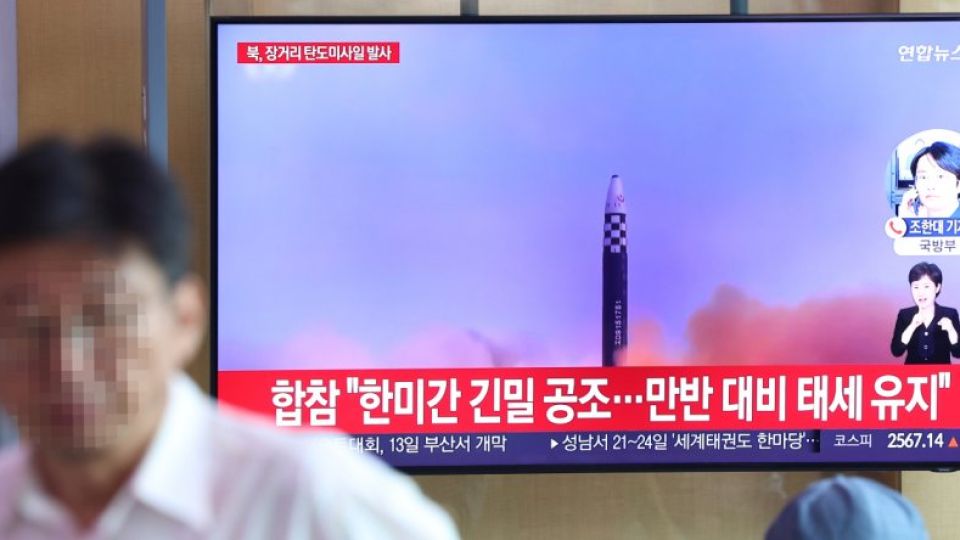July 19, 2023
SEOUL – North Korea fired two ballistic missiles toward the waters off its eastern coast on Wednesday, apparently in protest against the arrival of the US Navy’s nuclear-capable ballistic missile submarine in South Korea and the inaugural meeting of the new Nuclear Consultative Group between the allies the previous day.
The two short-range ballistic missiles were launched from Sunan district in the capital city of Pyongyang between 03:30 a.m. and 03:46 a.m., according to South Korea’s Joint Chiefs of Staff.
The missiles traveled approximately 550 kilometers before splashing down in the East Sea, the military said without providing further details.
A deputy head of the National Security Office held a meeting hours after the missile launch, the presidential office said in the morning, adding that the office holds such meetings to monitor the situation.
The missile launch occurred less than 12 hours after the arrival of the US Navy’s Ohio-class ballistic missile submarine, USS Kentucky (SSBN 737), in the South Korean port city of Busan on Tuesday afternoon.
The deployment of a US strategic asset was announced by Kurt Campbell, the US national security coordinator for Indo-Pacific affairs, following the inaugural meeting of the Nuclear Consultative Group, or NCG, between South Korea and the US in Seoul on Tuesday.
Campbell emphasized that the rare deployment of the nuclear submarine showcased extended deterrence, which is the US’ commitment to deter or respond to coercion and external attacks on US allies and partners with the full range of its military capabilities, including nuclear weaponry.
This marks the first deployment of a nuclear-capable US Navy ballistic missile submarine, capable of launching ballistic missiles armed with nuclear warheads, in Korea since the 1980s.
The carefully timed dispatch comes as the allies “highlighted that any nuclear attack by the DPRK against the ROK will be met with a swift, overwhelming, and decisive response” in a joint statement issued after the NCG meeting.
The NCG was established to develop scenarios and response protocols in the event of a North Korean nuclear attack on the Korean Peninsula.
The inaugural NCG meeting came one day after Kim Yo-jong, North Korean leader Kim Jong-un’s influential sister, on Monday reaffirmed North Korea’s strategic objective to gain the upper hand over South Korea and the US by bolstering the military and advancing missile and nuclear capabilities.
Kim asserted that the most appropriate approach to ensuring peace and stability on the Korean Peninsula is to deter the US through a display of power and might, while dismissing the NCG as a “meeting openly discussing the use of nukes” against North Korea.
Kim also warned that North Korea’s recent test-launch of the newly developed Hwasong-18 solid-fuel intercontinental ballistic missile on July 12 is merely the beginning of a broader military offensive that has already been set in motion.
The South Korean military announced on Wednesday that it will “closely monitor and keep a close watch on any relevant developments in preparation for further provocations by North Korea in close coordination with the US.”
Related Stories: US nuclear submarine enters South Korea in decades as allies launch new nuclear group


